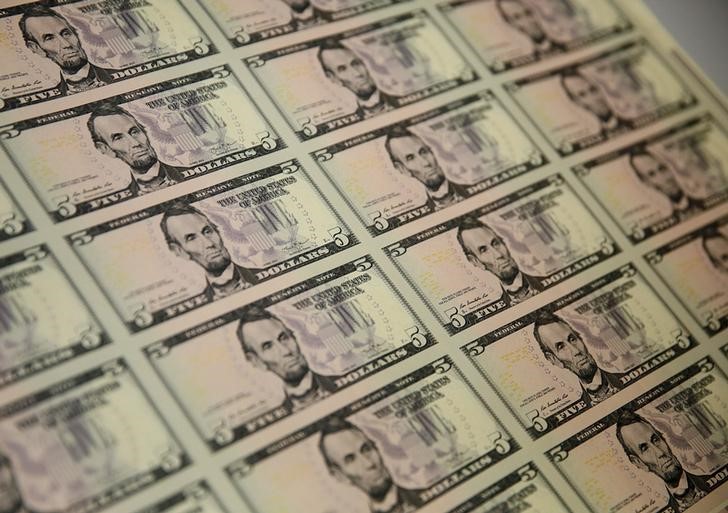Investing.com - The dollar remained lower against the other major currencies on Tuesday, after data showed that the U.S. trade deficit widened more than expected in August, further dampening optimism over the strength of the U.S. economy.
The dollar was lower against the yen, with USD/JPY down 0.09% at 120.34.
Official data showed that the U.S. trade deficit widened to $48.33 billion in August from $41.81 billion in July, whose figure was revised from a previously estimated deficit of $41.90 billion. Analysts had expected the trade deficit to widen to $47.40 billion in August.
The dollar remained under pressure as weak U.S. jobs data on Friday underlined fears that a slowdown in global economic growth has spread to the U.S. economy and prompted investors to push back expectations on the timing of an initial rate hike by the Federal Reserve to early 2016.
The dollar was also lower against the euro, with EUR/USD rising 0.31% to 1.1222.
Markets shrugged off official data earlier showing that German factory orders declined by 1.8% in August, confounding expectations for a 0.5% gain. Factory orders dropped 2.2% in July, whose figure was revised from a previously estimated 1.4% fall.
Elsewhere, the dollar was lower against the pound and the Swiss franc, with GBP/USD up 0.13% at 1.5165 and with USD/CHF shedding 0.23% to 0.9734.
The Halifax Bank of Scotland reported on Tuesday that its house price index fell 0.9% last month, compared to expectations for a 0.1% uptick, after an increase of 2.7% in August.
The Australian dollar was stronger, with AUD/USD gaining 0.33% to 0.7107, while NZD/USD edged down 0.08% to 0.6481.
In a widely expected move, the Reserve Bank of Australia left its benchmark interest rate unchanged at 2.00% and added that any changes in monetary policy will be determined by "further information on economic and financial conditions to be received over the period ahead".
The central bank also said that "the available information suggests that moderate expansion in the economy continues".
Separately, official data showed that Australia's trade deficit widened to A$3.095 billion in August from a revised A$2.792 billion in July. Analysts had expected the trade deficit to narrow to A$2.550 billion in August.
At the same time, data showed that New Zealand's NZIER business confidence index fell to a four-year low of minus 14 in the third quarter from a reading of 5 in the three months to June.
Meanwhile, USD/CAD rose 0.35% to trade at 1.3127 after data showed that Canada's trade deficit widened to C$2.53 billion in August from C$0.82 billion in July, whose figure was revised from a previously estimated deficit of C$0.59 billion.
Analysts had expected the trade deficit to widen to C$1.20 billion in August.
The U.S. dollar index, which measures the greenback’s strength against a trade-weighted basket of six major currencies, was down 0.23% at 96.00.
